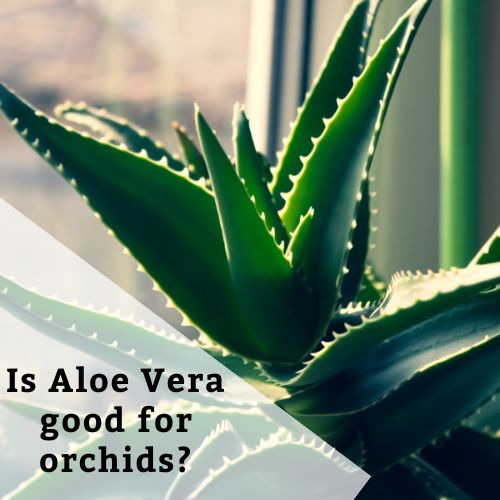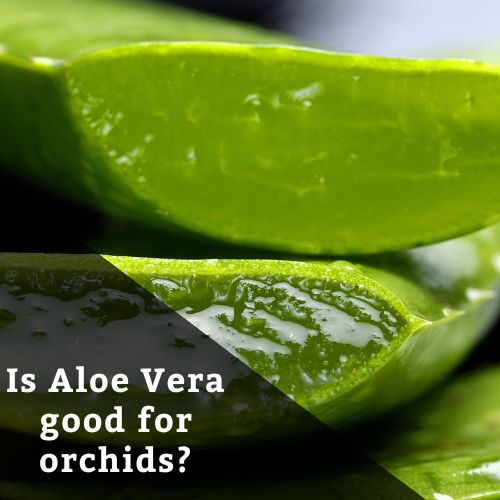Is Aloe Vera good for orchids?
Aloe vera, a succulent plant with fleshy leaves containing a clear gel, is known for its medicinal properties and benefits in gardening. The natural nutrients present in aloe vera, such as nitrogen, phosphorus, and potassium, make it an excellent natural fertilizer. The gel also helps condition soil by improving its structure, retaining moisture, and promoting aeration, creating a healthy environment for plants to grow.
Disclaimer – This post contains affiliate links. As an Amazon Associate, I may earn a commission if you make any purchases using my links, but at no extra cost to you.
Aloe vera also contains natural insecticides, which can help to repel pests and reduce the need for harmful pesticides. Additionally, the gel can provide relief to sunburned plants and act as a natural rooting hormone, promoting root growth in cuttings. Incorporating aloe vera into gardening can lead to healthier and more sustainable plant growth.
Aloe vera can be beneficial to gardening in several ways:

- Natural fertilizer: Aloe vera contains essential nutrients such as nitrogen, phosphorus, and potassium, which are beneficial for plant growth. Adding aloe vera to soil as a natural fertilizer can help promote healthy plant growth.
- Soil conditioner: Aloe vera can help condition soil by improving its structure, retaining moisture, and promoting aeration. This can help to create a healthy environment for plants to grow.
- Pest control: Aloe vera contains natural insecticides that can help to repel pests such as mites, aphids, and mealybugs. Spraying aloe vera juice on plants can help to deter pests from feeding on them.
- Sunburn relief: Aloe vera gel can be used to provide relief to plants that have been sunburned. The gel helps to soothe and cool the affected area, reducing stress on the plant and promoting healing.
- Rooting hormone: Aloe vera contains natural rooting hormones that can help to promote root growth in cuttings. Applying aloe vera gel to the base of a cutting before planting it can help to stimulate root development and increase the chances of successful rooting.
Overall, aloe vera can be a useful tool for gardeners looking for natural ways to improve plant health, control pests, and promote growth.
Is Aloe Vera Good For Orchids? What does aloe vera do for orchids?
Aloe vera can be beneficial for orchids in a few different ways. Here are some potential benefits:
- Moisturizes the roots: Aloe vera gel contains a lot of water and can help hydrate the orchid roots. This is important because orchids need to be watered carefully – too much water can lead to root rot, while too little water can cause the roots to dry out. Using aloe vera gel in your orchid potting mix can help to keep the soil evenly moist and prevent the roots from becoming too dry.
- Provides nutrients: Aloe vera contains various nutrients that can benefit plants, including orchids. These nutrients include vitamins, minerals, and amino acids. Adding a small amount of aloe vera gel to your orchid’s water or fertilizer mix can provide some extra nutrition to help your plant grow and thrive.
- Boosts immunity: Some research suggests that aloe vera may have immune-boosting properties. While this hasn’t been studied specifically in orchids, it’s possible that using aloe vera on your orchids could help to improve their overall health and make them more resistant to pests and diseases.
Overall, using aloe vera on your orchids is worth considering if you’re looking for a natural way to help your plants grow and stay healthy. Just be sure to dilute the aloe vera gel properly and use it in moderation – too much can actually harm your orchids.
What helps orchids grow?
Here are some factors that can help orchids grow:
- Proper lighting: Orchids need bright, indirect light to grow and thrive. Different types of orchids have different light requirements, so it’s important to research the specific needs of your orchid and place it in an appropriate location.
- Adequate water: Orchids require a careful water balance – they should not be overwatered or underwatered. Most orchids prefer to dry out slightly between waterings, but monitoring the soil moisture level and adjusting your watering schedule as needed is important.
- Appropriate temperature and humidity: Orchids prefer warm, humid conditions. They generally do best in temperatures between 60 and 80 degrees Fahrenheit and humidity levels between 40% and 60%.
- Proper potting mix: Orchids require a well-draining potting mix that allows air to circulate around the roots. Specialized orchid mixes are available that are designed to meet these requirements.
- Fertilizer: Orchids benefit from regular fertilization, providing the nutrients they need to grow and bloom. It’s important to use a fertilizer specifically formulated for orchids and follow the manufacturer’s instructions carefully.
- Proper pruning: Pruning is important for orchids to help maintain their shape and encourage new growth. It’s important to use clean, sharp tools and to prune at the right time of year for your particular type of orchid.
By providing your orchids with the proper lighting, water, temperature, potting mix, fertilizer, and pruning, you can help them grow and thrive.
What is the best plant food for orchids?
Many different types of plant food are suitable for orchids. Here are some options:
- Orchid-specific fertilizer: Many different types of orchid fertilizers are available that are specifically formulated to meet the unique needs of orchids. These fertilizers typically contain a balance of nitrogen, phosphorus, potassium, and other trace minerals that orchids need to grow and bloom.
- Fish emulsion: Fish emulsion is a type of organic fertilizer that is made from fish byproducts. It’s a good source of nitrogen, which is important for promoting leaf growth in orchids.
- Compost tea: Compost tea is a liquid fertilizer made from composted organic matter. It’s a good source of nutrients and beneficial microorganisms that can help improve soil health and promote healthy growth in orchids.
- Liquid seaweed: Liquid seaweed is a type of organic fertilizer that is made from seaweed. It’s a good source of trace minerals and plant growth hormones, which can help promote healthy growth and flowering in orchids.
When choosing a plant food for your orchids, it’s important to consider the specific needs of your plants and to follow the manufacturer’s instructions carefully. Over-fertilizing can harm orchids, so using plant food in moderation is important and avoiding fertilizing when your orchids are dormant or stressed.
What is a natural fertilizer for orchids?
Several natural fertilizers can be used for orchids. Here are some options:
- Compost: Compost is a natural fertilizer that is made from organic matter, such as kitchen scraps, yard waste, and leaves. It’s a good source of nutrients for orchids and can help improve soil health.
- Fish emulsion: Fish emulsion is a natural fertilizer made from fish byproducts. It’s a good source of nitrogen, which is important for promoting leaf growth in orchids.
- Liquid seaweed: Liquid seaweed is a natural fertilizer made from seaweed. It’s a good source of trace minerals and plant growth hormones, which can help promote healthy growth and flowering in orchids.
- Epsom salts: Epsom salts are a natural magnesium source, an important nutrient for orchids. They can be added to the soil or dissolved in water and used as foliar spray.
- Banana peels: Banana peels can be dried and crushed to make a natural fertilizer that is rich in potassium. They can be added to the soil or buried around the base of the plant.
When using natural fertilizers, it’s important to use them in moderation and to avoid over-fertilizing, as this can be harmful to orchids. It’s also a good idea to follow the manufacturer’s instructions carefully and to monitor your plants for any signs of stress or nutrient deficiencies.
How do I force my orchid to bloom?

Orchids can be a bit finicky when it comes to blooming, but there are a few things you can try to encourage blooming:
- Provide the right light: Orchids need the right amount of light to bloom. They typically prefer bright, indirect light, but too much or too little light can affect blooming. Try moving your orchid to a brighter location or providing some shade if it’s getting too much direct sunlight.
- Adjust the temperature: Orchids typically prefer a temperature range of 65-75°F during the day and 55-65°F at night to encourage blooming. Keep your orchid away from drafts or temperature fluctuations, which can stress the plant and affect blooming.
- Proper watering: Orchids need consistent but not excessive moisture to bloom. Allow the top inch of soil to dry out between watering, and ensure the pot has good drainage to avoid waterlogged roots.
- Fertilize appropriately: Use a fertilizer specifically formulated for orchids and apply it according to the instructions. Over-fertilizing can harm the plant, so be careful not to apply too much.
- Mimic natural conditions: Orchids often bloom in response to changes in the natural environment, such as cooler nights or increased humidity. You can try mimicking these conditions by placing your orchid in a cooler room at night or increasing the humidity around the plant.
Keep in mind that some orchids have specific blooming cycles, so be patient and don’t be too quick to assume that something is wrong if your orchid isn’t blooming right away. With proper care and patience, your orchid should bloom when it’s ready.
What makes orchids happy?
Orchids are happy when their basic needs are met. Here are some factors that can contribute to the happiness of your orchids:
- Adequate lighting: Orchids need plenty of bright, indirect light to grow and bloom. Different types of orchids have different light requirements, so it’s important to research the specific needs of your orchid and place it in an appropriate location.
- Proper watering: Orchids should be watered when the potting mix is dry to the touch. Overwatering can cause root rot, while underwatering can cause the plant to become dehydrated. It’s important to use a well-draining potting mix and to water the orchid thoroughly, allowing the excess water to drain away.
- Appropriate temperature and humidity: Orchids prefer warm, humid conditions. They generally do best in temperatures between 60 and 80 degrees Fahrenheit and humidity levels between 40% and 60%. If the air in your home is dry, you can use a humidifier or place a tray of water near your orchids to help increase the humidity.
- Proper potting mix: Orchids require a well-draining potting mix that allows air to circulate around the roots. Specialized orchid mixes are available that are designed to meet these requirements.
- Regular fertilization: Orchids benefit from regular fertilization, which provides them with the nutrients they need to grow and bloom. It’s important to use a fertilizer specifically formulated for orchids and follow the manufacturer’s instructions carefully.
- Proper pruning: Pruning can help promote healthy growth and blooming in orchids. It’s important to use clean, sharp tools and to prune at the right time of year for your particular type of orchid.
- Rest: Many types of orchids require a period of rest or reduced watering in order to bloom. Research the specific needs of your orchid to determine if it requires a rest period and how long this period should be.
By providing your orchids with the proper lighting, watering, temperature and humidity, potting mix, fertilizer, pruning, and rest, you can help keep them happy and healthy.